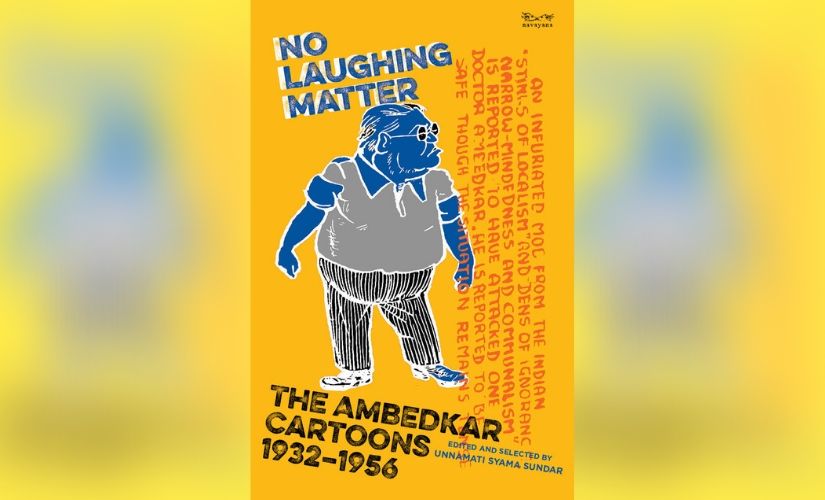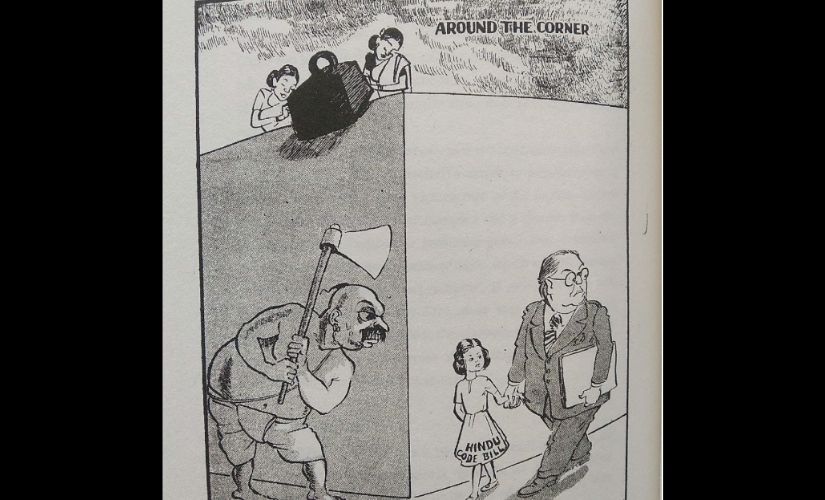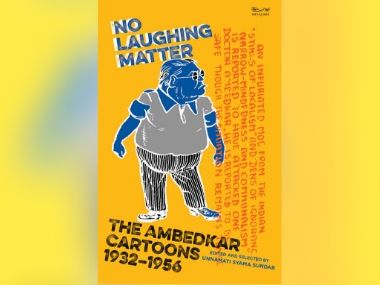In a writer’s life, images often matter more than words. I vividly remember my first encounter with words manifesting through images, colours, and lines on paper. In 2010, a friend of mine had taken me to his college of fine arts in Nagpur, and that is where I first witnessed the correlation between words on paper and images on canvas, between a pen and a brush, a sentence and a sketch. These elements often complement and supplement each other, however, they individually have vastly different effects on the psyche of the audience they are presented to. In No Laughing Matter: The Ambedkar Cartoons, 1932-1956, author and editor Unnamati Syama Sundar seamlessly captures this synergy between words and images, and studies its impact on the perception of an issue or person. Further exploring what I had encountered in Nagpur was a difficult prospect even a decade ago, as India was yet to make information more accessible to the layperson on the mentioned subject. However, it was only as recently as 2014, when my article ‘Savarna English and the violent exclusion of Dalits’ got published in Roundtable India, that I re-acquainted myself with the wonders of this relation between the written and the painted. The piece was accompanied by an illustration by Syama Sundar, or “Syam”, in which, against a backdrop of bright yellow, were caricatures of Savarna men and women, and the manner in which they use English to assert their cultural and social ‘superiority’ in India. The image succinctly captured what I wished to convey through words. I was impressed by Syam’s cartoon, to say the least, and was compelled to acknowledge, yet again, the power of images depicting words. [caption id=“attachment_6757801” align=“alignnone” width=“825”]  Cover of No Laughing Matter by Unnamati Syama Sundar[/caption] To me, the artist’s work appeared to be overtly political and vigorous, having the potential to justify the struggles and triumphs of Dalits through cartoons. In No Laughing Matter, I found evidences of the same powerful visual narrative that has shaped the perception of Babasaheb Ambedkar and his central position in the political discourse of the country. The book is a compilation of cartoons depicting the Dalit icon, printed in various publications during his lifetime. It further analyses the contexts in which each illustration was made, the stories behind them, and the popular image of Ambedkar perpetuated through their messaging. In his lifetime, Ambedkar emerged as the symbol of rationality, logic and pragmatism in politics, as opposed to many of his contemporaries who had proven to be orthodox in their approach. No Laughing Matter is a study of Ambedkar in retrospect, divided into seven sections that correspond to the years and different stages of the protagonist’s political and social life. The man was noted as a force to reckon with in a Savarna nation that could not suppress him or the voices he represented for too long. The book makes Ambedkar appear more tangible to us, with readers being allowed to ‘see’ and understand him through a documented history of illustrations. [caption id=“attachment_6757871” align=“alignnone” width=“825”]  ‘Tense Moments: The Brooding Premier’ by Shankar, Hindustan Times, 30 July, 1932[/caption] For instance, this cartoon by Shankar, published in Hindustan Times on 30 July, 1932, “marks BR Ambedkar’s entry into the world of English language newspaper cartoons in colonial India,” Syam writes. Ever since Ambedkar began his journey as a Dalit leader in British and independent India, his accounts have been widely documented by him and others, and yet, a visual image of the man was largely missing. In each cartoon cited in the book, Syam can’t help but scrutinise the artwork through an intensely political, yet sensitive lens. No Laughing Matter demands seriousness that helps in reliably analysing Ambedkar’s testimonials of his crusades against irrational, orthodox, power mongering Savarnas, who stood against his attempts to make India more inclusive, rational, and scientific. Take a look at this cartoon. [caption id=“attachment_6757851” align=“alignnone” width=“825”]  The ‘Hindu Code Bill’ cartoon[/caption] The cartoon depicts the highly contested Hindu Code Bill initiated in the late 1940s, intended to emancipate all Hindu women from systemic violence and exploitation. Ambedkar, leading the committee that drafted its revision in 1948, was resolute, firm and well aware of the threats he faced from upper class Hindu society at the time. Nonetheless, he powered through with his convictions in place. The cartoon shows two women trying to crush a Brahmin man waiting around the corner to kill the ‘Hindu Code Bill’ girl child. However, history suggests that Brahmin women too were equally opposed to the mandate. Clearly, the illustration tends to distort the reality of its times. “The Hindu Code Bill does appear to be Ambedkar’s ‘favourite little girl’. However, the depiction of women crushing Brahminism seems an overestimation: parliament was overwhelmingly dominated by Savarna Hindu males,” Syam writes about the cartoon. [caption id=“attachment_6762401” align=“alignnone” width=“825”]  Scholar and cartoonist, Unnamati Syama Sundar[/caption] This cartoon is rather exemplary of how visual artefacts, when assessed in the absence of an unbiased interpreter, can mislead people. In No Laughing Matter, Syam seems to present to us not just a repertoire of Ambedkar’s graphic representations, but also, and more importantly, its reading through an anti-caste gaze, without which such depictions would lose their historical authenticity and validity. For his readers, Syam has carefully decoded each cartoon with historical precision and an anti-caste filter. This enables him to thoroughly explain not only the politics of cartoons, but the politics of aesthetics in India and its incentives as well.
No Laughing Matter is a study of BR Ambedkar in retrospect, in which the protagonist appears more tangible to us, with readers being allowed to ‘see’ and understand him through a documented history of illustrations.
Advertisement
End of Article


)
)
)
)
)
)
)
)
)



